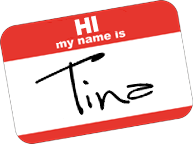Managing Stress Without Using, Dealing with Cravings
Sometimes when we are trying to cut down our Tina use, or quit using Tina, we are confronted with situations that make us crave using. Other times, we are faced with emotions that are uncomfortable, we become angry, hurt, or sad and want to get rid of these feelings by using Tina. Why can’t we just use Tina to cope with painful feelings and urges? Because…
- Pain is a normal part of life and cannot always be avoided.
- If you can’t deal with your pain, you will act impulsively and out of control
- When you act impulsively, you can hurt yourself, hurt others
- When you act impulsively you lose the ability to get what you want
Cravings are a normal part of recovery and to be expected. The can come on suddenly and seemingly out the blue. To deal with cravings and stress, we need to make a plan to cope with this distress. When we use Tina to cope, we can loose some of our ability to cope with day-to-day stressors. Building up our distress tolerance is an important part of regaining control.
So what do you do when you are hit by an urge to use, or by a wave of emotion that you don’t like? Know that urges and emotions are temporary and have a predictable pattern. They have an onset, when you first feel them, then they peak or crest like a wave on the ocean – they reach a point where they are most intense, and then ebb or subside a bit once they crest. Often it is hard to get to the ebbing part of an urge, and during an urge, it can be near-impossible to practice any healthy strategy. When an urge comes on, distract yourself until it passes. Remember the acronym ACCEPTS:
- A – ACTIVITIES: Do something. Call up, email or go visit a friend. Watch a movie you like, play a video game, write in a journal, go for walk, clean your room, go for a run.
- C – CONTRIBUTE: Do something nice for someone else. Help a friend, or neighbour or community member, make dinner, clean up shared living space, volunteer.
- C – COMPARISONS: compare your situation to someone less fortunate, or to times in your life when things were worse, consider what you have that has in a better situation than someone in a worse one.
- E – EMOTIONS: Induce different or opposing emotions. Watch a comedy if you are sad, rent a scary movie if you are bored, listen to romantic, sweet music if you are feeling jaded and cynical, practice breathing techniques if you are anxious, exercise if you are feeling depressed
- P – PUSH AWAY: the painful situation out of sight and mind temporarily. Leave the situation mentally by moving your attention away from what is causing you pain. Build an imaginary wall between you and the source of distress.
- T – THOUGHTS: replace them, put new ones in your head. Read, do word puzzles, count to 10, notice the colours on a poster, repeat the words to a song in your mind, do mantras or affirmations, review linear, rational arguments for things detached from emotion for now. Stay in logic-land for now.
- S – SENSATIONS: Intensify other sensations, hold or chew on ice, listen to loud music, wear a rubber band on your wrist, take a hot or cold shower, squeeze a ball or toy, run fast on spot, scream into a pillow.
Based on: Miller, Rathus, Landsman (1999). Adapted from Marsha M. Linehan’s Skills Training Manual for Treatment of Borderline Personality Disorder, Guilford Press, 1993.


